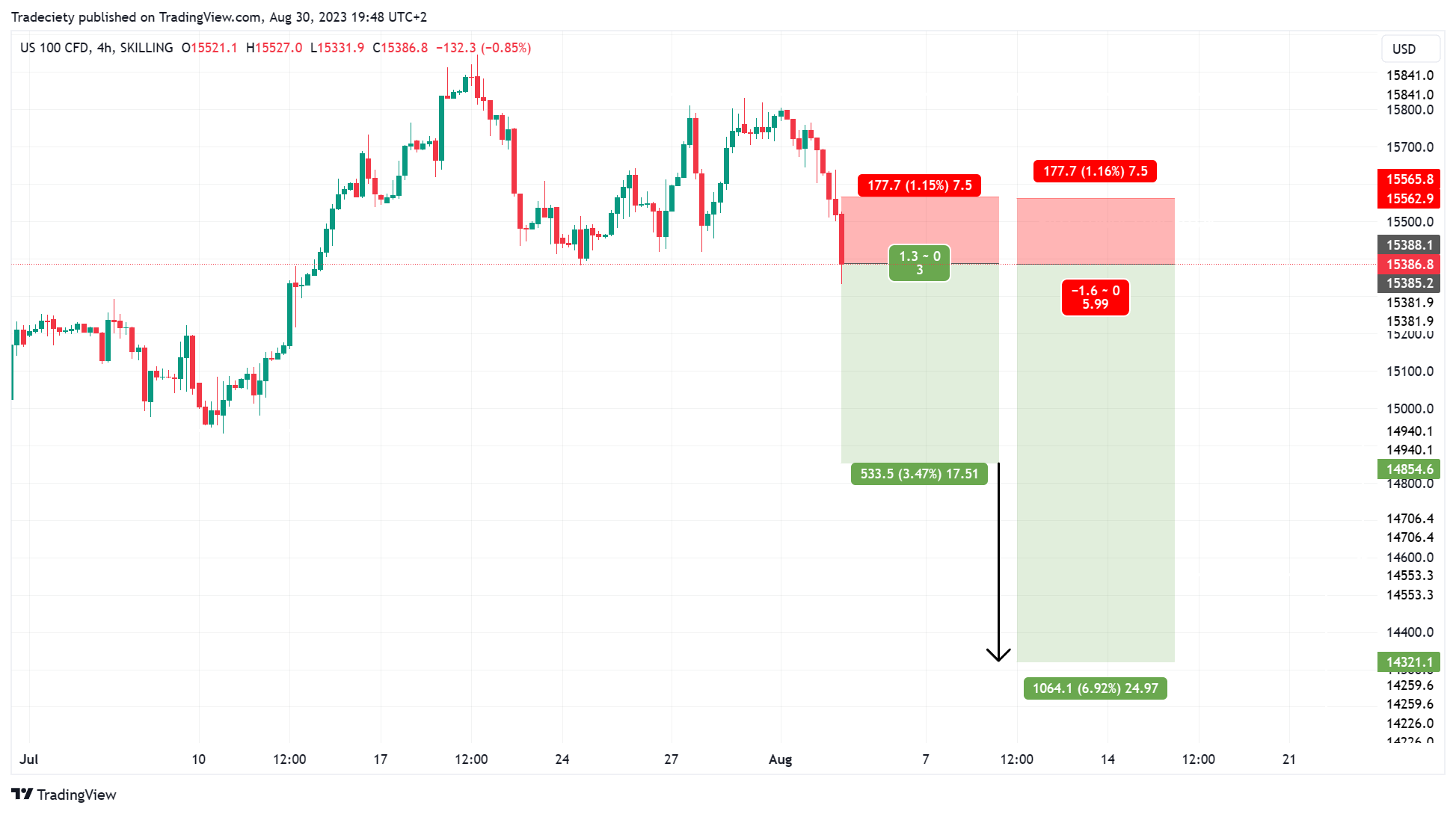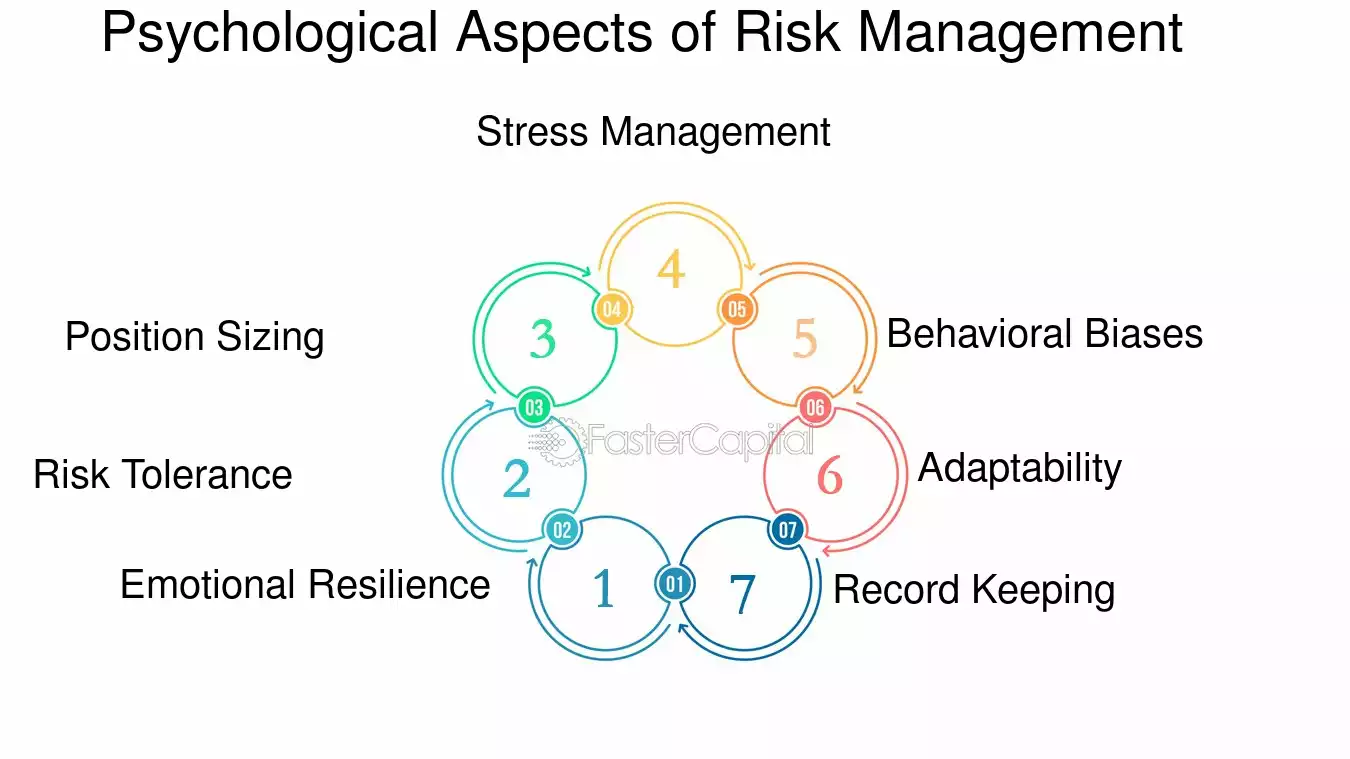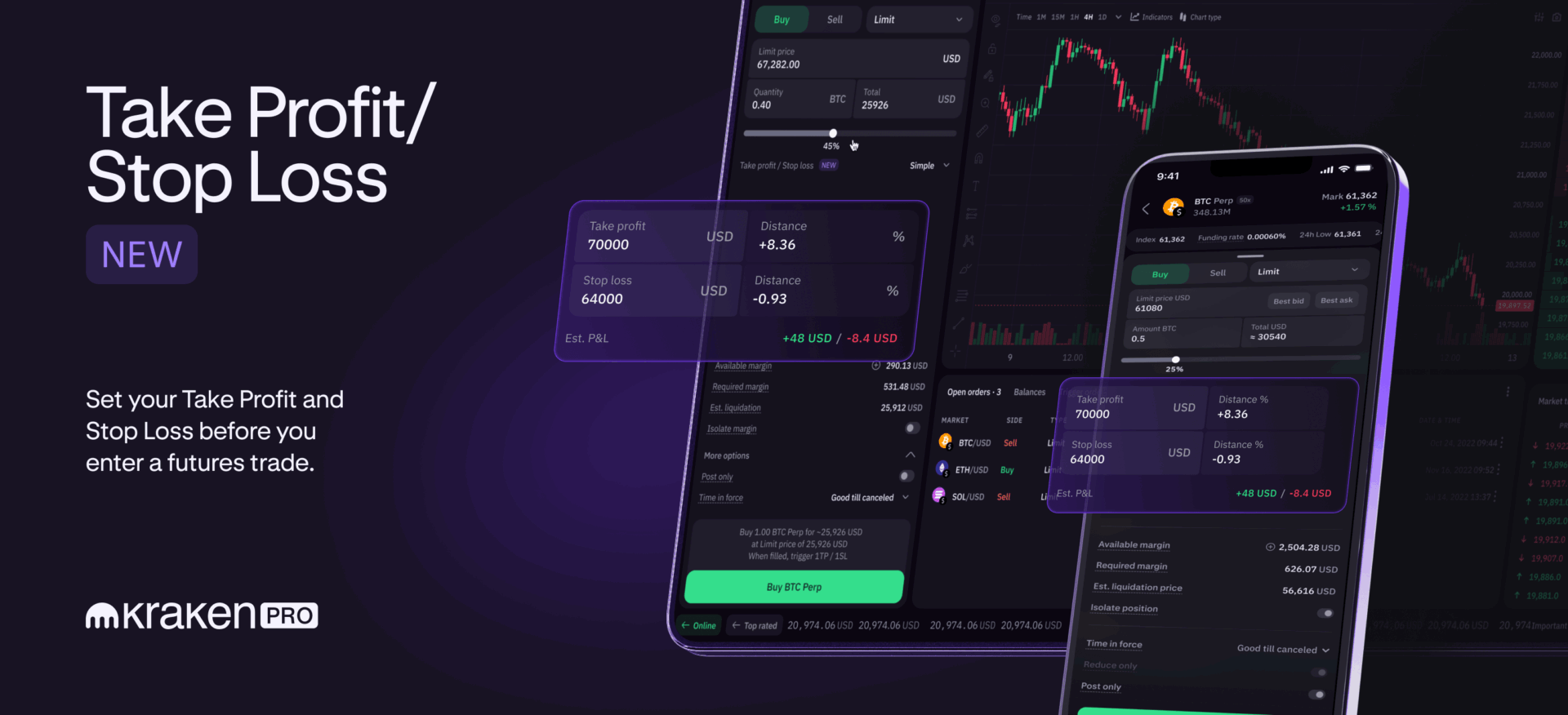Did you know that the only thing more volatile than the futures market is your morning coffee? For futures day traders, mastering risk management is crucial to navigating this unpredictable landscape. In this article, we explore essential techniques to safeguard your investments, including effective stop-loss strategies, the importance of position sizing, and the power of diversification. We'll also highlight common mistakes to avoid and the significance of a solid trading plan. Additionally, discover how to assess market volatility, utilize risk-reward ratios, and implement tools that enhance your risk management approach. With insights into psychological aspects and strategies for mitigating losses, this guide by DayTradingBusiness is your roadmap to trading success.
What are the best risk management techniques for futures day traders?
1. Position Sizing: Limit risk on each trade to a small percentage of your total capital, typically 1-2%. This ensures that no single loss significantly impacts your account.
2. Stop-Loss Orders: Always use stop-loss orders to automatically exit positions at a predetermined price, protecting against large losses.
3. Diversification: Trade multiple futures contracts across different markets to spread risk and reduce the impact of a single market move.
4. Risk-to-Reward Ratio: Aim for a favorable risk-to-reward ratio, ideally 1:2 or better, to ensure that potential gains outweigh potential losses.
5. Trading Plan: Develop and stick to a detailed trading plan that outlines entry and exit strategies, risk management rules, and market analysis.
6. Regular Review: Periodically review your trades and strategies to identify what works and what doesn’t, adjusting your approach accordingly.
7. Emotional Discipline: Maintain emotional control to avoid impulsive trading decisions that could lead to unnecessary losses.
8. Market Analysis: Stay informed about market conditions, news, and technical indicators to make informed trading decisions and manage risks effectively.
How can futures day traders set effective stop-loss orders?
Futures day traders can set effective stop-loss orders by following these steps:
1. Determine Risk Tolerance: Decide how much capital you’re willing to lose on a trade, typically 1-2% of your trading account.
2. Analyze Market Volatility: Use tools like Average True Range (ATR) to gauge market volatility and set stop-loss levels beyond typical price fluctuations.
3. Use Technical Levels: Place stop-loss orders just outside key support and resistance levels to avoid being triggered by normal market noise.
4. Employ Trailing Stops: Adjust your stop-loss order as the trade moves in your favor to lock in profits while minimizing potential losses.
5. Review Trade Size: Ensure your position size aligns with your stop-loss strategy to maintain your overall risk profile.
6. Stay Disciplined: Stick to your stop-loss plan; don’t move it to avoid a loss, which can lead to larger losses.
By implementing these techniques, futures day traders can better manage risk and protect their capital.
What role does position sizing play in futures trading risk management?
Position sizing is crucial in futures trading risk management as it determines how much capital you allocate to each trade. Proper position sizing helps limit potential losses, ensuring that no single trade significantly impacts your overall account balance. By calculating the appropriate size based on your risk tolerance and the volatility of the futures contract, you can maintain control over your trading risk. This approach allows you to stay in the market longer and avoid catastrophic losses, ultimately enhancing your chances for consistent profitability.
How can day traders diversify their futures trading portfolio?
Day traders can diversify their futures trading portfolio by incorporating different asset classes, such as commodities, indices, and currencies. They should consider trading multiple contracts within these categories to spread risk. Utilizing various trading strategies, like trend following and mean reversion, can also enhance diversification. Additionally, setting stop-loss orders and position sizing based on volatility can help manage risk effectively. Regularly reviewing and adjusting the portfolio based on market conditions ensures it remains balanced.
What are the common mistakes in risk management for futures traders?
Common mistakes in risk management for futures traders include:
1. Overleveraging: Taking on too much leverage can amplify losses.
2. Ignoring Stop Losses: Failing to set or adhere to stop-loss orders can lead to significant losses.
3. Lack of Diversification: Concentrating too much capital in one market or asset increases risk.
4. Emotional Trading: Allowing emotions to drive decisions can result in impulsive trades and losses.
5. Inadequate Position Sizing: Not calculating position sizes based on risk tolerance can lead to overexposure.
6. Neglecting Market Conditions: Ignoring changes in market volatility can affect risk assessment.
7. Failure to Adapt: Sticking to the same strategies despite changing market conditions can be detrimental.
8. Poor Record Keeping: Not maintaining a trading journal hinders learning from past mistakes.
9. Inconsistent Strategy: Frequently changing strategies without evaluation can lead to confusion and losses.
10. Underestimating Costs: Overlooking commissions and slippage can erode profits.
Addressing these mistakes can improve risk management for futures traders significantly.
How can traders use risk-reward ratios in futures trading?

Traders can use risk-reward ratios in futures trading by determining the potential profit against the potential loss for each trade. To do this, first, set a clear entry point and define stop-loss and take-profit levels. For instance, if a trader risks $100 to potentially gain $300, the risk-reward ratio is 1:3. This helps in assessing whether a trade is worth taking.
By consistently using favorable risk-reward ratios, traders can ensure that even if they have more losing trades than winning ones, they can remain profitable overall. Aim for a ratio of at least 1:2 or better. Regularly analyze past trades to refine strategies and improve decision-making based on these ratios.
What tools can help with risk management in futures trading?
Tools that can help with risk management in futures trading include:
1. Stop-Loss Orders: Automatically exit a trade at a predetermined loss level.
2. Position Sizing Calculators: Determine the appropriate amount of capital to risk on each trade.
3. Risk-Reward Ratio Calculators: Assess potential profit against risk to make informed decisions.
4. Trading Journals: Track trades and performance to identify patterns and areas for improvement.
5. Volatility Indicators: Tools like Average True Range (ATR) to gauge market volatility and adjust strategies.
6. Margin Management Tools: Monitor margin levels to avoid margin calls.
7. Portfolio Management Software: Consolidate and analyze multiple futures positions for overall risk assessment.
8. Simulation Software: Backtest strategies and understand potential risks without real capital.
Using these tools effectively can enhance your risk management strategy in futures trading.
How should futures day traders assess market volatility?
Futures day traders should assess market volatility by analyzing key indicators like the Average True Range (ATR), Bollinger Bands, and historical price movements. Monitoring news events and economic reports is crucial, as they often trigger volatility spikes. Using a volatility index, such as the VIX, can provide insight into market sentiment. Additionally, implementing stop-loss orders and position sizing based on current volatility helps manage risk effectively. Regularly reviewing these factors ensures traders adapt to changing market conditions.
What is the importance of a trading plan for risk management?
A trading plan is crucial for risk management in futures day trading because it sets clear guidelines on entry and exit points, position sizes, and acceptable loss limits. This structure helps traders avoid emotional decisions, maintain discipline, and stick to their strategy during volatile market conditions. By defining risk tolerance and establishing rules for managing trades, a trading plan minimizes potential losses and maximizes profitability. Ultimately, it fosters consistency and confidence, essential components for long-term success in trading.
How can futures day traders protect against unexpected market moves?
Futures day traders can protect against unexpected market moves by using several key risk management techniques:
1. Stop-Loss Orders: Set predetermined stop-loss levels to limit potential losses on trades.
2. Position Sizing: Adjust the size of each trade based on your overall account balance and risk tolerance to avoid significant losses.
3. Diversification: Trade multiple futures contracts in different markets to spread risk.
4. Hedging: Use options or other futures contracts to offset potential losses in your primary positions.
5. Regular Monitoring: Keep an eye on market news and economic indicators that could trigger volatility.
6. Risk-Reward Ratio: Establish a favorable risk-reward ratio before entering a trade to ensure potential gains outweigh possible losses.
7. Limit Orders: Use limit orders to control entry and exit points, minimizing the impact of sudden market shifts.
Implementing these techniques can help futures day traders navigate unexpected market movements effectively.
What are the psychological aspects of risk management in trading?

The psychological aspects of risk management in trading include emotional discipline, cognitive biases, and stress management. Traders must maintain emotional control to avoid impulsive decisions, which can lead to significant losses. Cognitive biases, like overconfidence or loss aversion, can distort judgment; recognizing these helps traders make more rational choices. Stress management techniques, such as mindfulness or structured routines, can enhance focus and decision-making under pressure. Ultimately, understanding these psychological factors is crucial for effective risk management and long-term trading success.
## How Can Day Traders Effectively Manage Risks When Trading Futures?
Futures in day trading are contracts to buy or sell an asset at a predetermined price on a specific date. They allow traders to speculate on price movements of commodities, currencies, or indices. Day traders use leverage to maximize gains but face significant risks, including market volatility and margin calls.
Learn more about: What Are Futures in Day Trading?
How can traders evaluate their risk tolerance for futures trading?
Traders can evaluate their risk tolerance for futures trading by assessing their financial situation, emotional capacity, and trading experience. Start by determining how much capital you can afford to lose without impacting your lifestyle. Next, consider your emotional response to losing trades; if volatility causes significant stress, you may need to lower your risk. Analyze past trading experiences to identify your comfort level with loss and drawdown. Lastly, use risk assessment tools like the Kelly Criterion or position sizing calculators to quantify your risk tolerance in relation to your trading strategy. Regularly reassess your risk tolerance as market conditions and personal circumstances change.
What are the benefits of using trailing stops in futures trading?
Trailing stops in futures trading provide several benefits:
1. Lock in Profits: As the market moves in your favor, trailing stops automatically adjust, securing gains without needing constant monitoring.
2. Limit Losses: They help you exit trades at predefined levels, minimizing potential losses if the market reverses unexpectedly.
3. Flexibility: Trailing stops can be adjusted based on market volatility, allowing traders to adapt to changing conditions.
4. Emotion Control: By using trailing stops, traders can stick to their strategy and avoid emotional decision-making during volatile market swings.
5. Automated Execution: They execute trades automatically, ensuring timely exits even if you're not actively watching the market.
Using trailing stops enhances risk management, allowing traders to balance potential rewards with manageable risks.
How can day traders implement a risk management checklist?
Day traders can implement a risk management checklist by following these steps:
1. Set Risk Tolerance: Define how much capital you are willing to risk on each trade, typically 1-2% of your trading account.
2. Use Stop-Loss Orders: Establish stop-loss levels before entering a trade to limit potential losses.
3. Position Sizing: Calculate the appropriate position size based on your risk tolerance and the distance to your stop-loss.
4. Diversify Trades: Avoid putting all capital into a single trade or correlated assets to spread risk.
5. Review Margin Requirements: Understand margin rules and ensure you have adequate capital to avoid margin calls.
6. Monitor Market Conditions: Stay updated on news and market volatility that could impact your trades.
7. Evaluate Trades: After each trade, analyze what went right or wrong to improve future decision-making.
8. Adjust Strategy: Be flexible and ready to adjust your trading strategy based on performance metrics.
9. Limit Daily Losses: Set a maximum loss limit for the day; if reached, stop trading to prevent emotional decision-making.
10. Maintain Discipline: Stick to the checklist consistently to develop a disciplined trading approach.
By incorporating these elements, futures day traders can effectively manage risk and protect their capital.
What strategies can help mitigate losses in futures trading?

1. Set Stop-Loss Orders: Establish automated sell orders to limit potential losses on each trade.
2. Diversify Positions: Spread investments across various commodities or contracts to reduce risk exposure.
3. Position Sizing: Use a calculated approach to determine the size of each trade based on your overall capital and risk tolerance.
4. Use a Trading Journal: Keep track of trades to analyze performance and identify patterns that lead to losses.
5. Implement Risk-Reward Ratios: Aim for trades that offer a favorable risk-reward ratio, typically at least 1:2.
6. Stay Informed: Monitor market news and economic indicators that could impact futures prices.
7. Limit Leverage: Use leverage wisely; excessive leverage can amplify losses.
8. Regularly Review Strategies: Adapt and refine your trading strategies based on performance and market changes.
9. Avoid Emotional Trading: Stick to your plan and avoid impulsive decisions based on market fluctuations.
10. Use Technical Analysis: Employ chart patterns and indicators to make informed entry and exit decisions.
How do economic indicators impact risk management for futures traders?
Economic indicators significantly impact risk management for futures traders by influencing market volatility and price direction. Key indicators like GDP growth, unemployment rates, and inflation data can create sharp price movements. Traders use this information to adjust their positions, set stop-loss orders, and manage exposure. For example, a positive jobs report may lead to bullish sentiment, prompting traders to increase their risk appetite. Conversely, negative indicators can signal potential downturns, leading to more conservative strategies. Understanding these indicators helps traders anticipate market shifts and make informed decisions to mitigate losses.
Conclusion about Risk Management Techniques for Futures Day Traders
Effective risk management is essential for futures day traders to navigate the complexities of the market. By employing techniques such as setting stop-loss orders, optimizing position sizing, and diversifying portfolios, traders can significantly reduce potential losses. Understanding market volatility and maintaining a robust trading plan further enhances risk control. Additionally, psychological resilience plays a crucial role in making informed decisions. Embracing these strategies can empower traders to mitigate risks and improve their overall trading performance. For more in-depth guidance on mastering risk management, DayTradingBusiness is here to support your journey.
Sources:
- Using Financial Futures in Trading and Risk i Management
- Do commodity futures have a steering effect on the spot stock market ...
- Trade Sizing Techniques for Drawdown and Tail Risk Control
- Women and Trading: Currencies, Commodities, and Crypto | CFA ...
- Back to Basics - Demystifying Hedge Funds - Finance ...